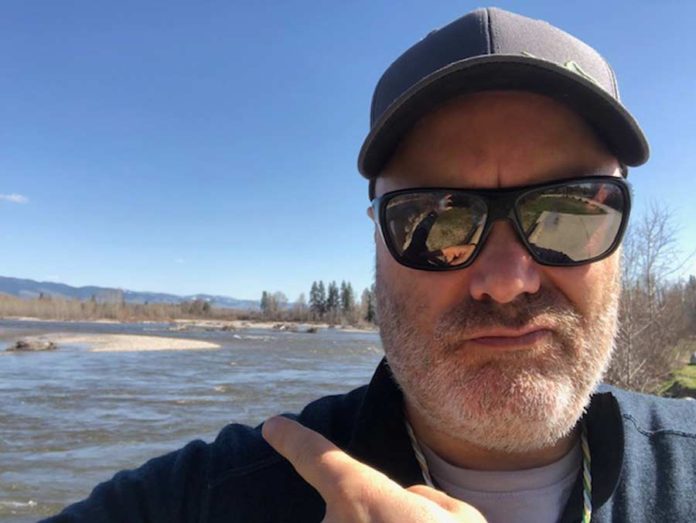One of the great things about fly fishing is that there’s
always something new to learn; dedicated anglers will never run out of new
techniques, species, waters, or fly patterns to figure out. This very blog is
dedicated to helping anglers of every level, from novice to expert, to become
better, and there are lots of other ways to learn: books, magazines, fellow
anglers, and the like. However, trial and error also plays an important role. For
me, there are several fly-fishing lessons in which the “error” part of that phrase
served up an unforgettable rebuke. You never, ever want to make that
mistake again. Here are a few examples.
1. Roll your hip boots up before you wade into the river.
The very first pair of waders I bought were canvas hip
waders, and I was so excited to use them that I drove right from the store to
the Powwow River below Trickling Falls, in southern New Hampshire. I knew that
a certain run was chock-full of stocked brook trout eager to take my flies. I
walked down to the water, rigged my hand-me-down fly rod with a Parmachene Belle
wet fly, and waded right in. The sucking sound of the river water filling my
boots caused my heart to sink, as I realized what I had done. My excitement
turned to despair as I sloshed my way back to the car to empty my boots in the
parking lot. I drove home cursing my luck.
2. Make sure your desiccant container is securely closed
before you put it in your pocket.
The plastic container that Orvis Hy-Flote Shake-N-Flote comes in has a lid that snaps shut with authority, and it turns out that there’s a reason for that. I was wet-wading a local brook-trout stream on a summer day, casting a Stimulator into pockets and runs and having a grand old time. About an hour into the trip, I shook my fly dry but didn’t hear that telltale snap! as I shut the lid before putting the desiccant into the pocket of my shorts. The next time I reached for the Hy-Flote, my hand found a pocketful of desiccant. Here’s the problem: you can’t wash the stuff off because it is hydrophobic and you end up with awful-feeling dry skin. And what to do with all the powder in the pocket? I am now OCD-like in my diligence when it comes to closing that lid, and I usually check it a couple times before it goes back in the pocket. (As an aside, one thing I don’t seem to learn is how to spell desiccant correctly the first time. Ever.)
3. Don’t slap the water with your rod tip out of
frustration.
I had never broken a fly rod in my life when I went to guide
on Alaska’s Copper River, which flows into Lake Iliamna. One day in July,
however, I couldn’t take the fact that I’d butt-hooked another sockeye
while trying to target the big rainbows holding among the salmon. As the
bright-red fish zoomed downstream with my Glo Bug snagged in its tail, I vented
my frustration by slapping the tip of my rod on the surface of the water. It
wasn’t until a few minutes later that I realized that the top three inches of
the rod were sliding freely along the fly line between me and the fish. My
frustration increased exponentially, which was the opposite of what I needed
right then.
4. Make sure you have an exit plan when you wade deep.
Like most young men, I had a tendency to leap before I looked
when I was a beginning angler. I remember fishing below Middle Dam on Maine’s
Rapid River and spotting a midstream rock that would make the perfect platform
for casting to rising salmon on the other side. I was right: I caught three
nice fish. But when I turned around to leave, I realized that the route I’d
taken to get to the big rock—a route that required me to wade in water about an
inch below the top of my chest waders—wasn’t going to work for the return trip.
The fact that the sun had already dipped below the horizon didn’t help. The
first step off the midstream boulder turned my misadventure into a chilly swim
and an uncomfortable walk back to the lodge.
5. If the knot doesn’t feel right when you seat it, you’ve
tied it badly.
I’d been fishing for about two hours without seeing any sign
of trout, and I had accepted that a serious skunking was my fate. I was casting
a double streamer rig and decided to try a different pattern as a dropper. I
tied on a sparse brown Hairwing, and when I went to tighten up the knot, something
didn’t feel quite right. “Doesn’t matter,” I thought. “I’m not catching
anything anyway.” Three casts later, just at the point of the swing when you’d
expect the take, I felt a heavy fish hammer the fly. I set the hook, watched
the buttery side of a 20-inch brown roll just below the surface, and then felt
the line go slack. When I brought the flies in, the telltale curlicues where
the bottom fly should have been were the source of much self-flagellation.
Credit: Source link































